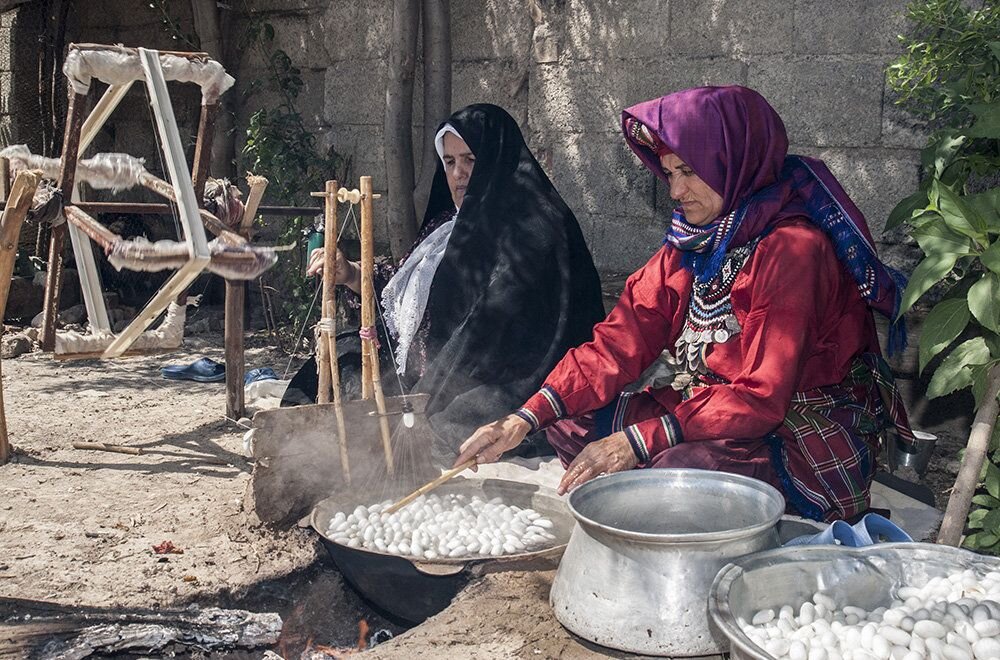Silk spinning, socks weaving, food making in Gilan added to National Heritage list

TEHRAN-Traditional skills of silk spinning and keeping silk cocoons, socks weaving, and making a variety of local dishes, which have long been practiced in northern Gilan province, have recently been inscribed on the National Heritage list.
For more than three millennia, silk thread produced in Iran has been used to make clothing fabric and for weaving Persian rugs and there are silk makers in Gilan, who still practice the trade their ancestors did some 3,000 years ago.
Kal Kebab, fried cheese, stuffed eggplant, black rice, a traditional dessert of Tian Halva, and stews of Baqlavavich and Torsh Vash are among the local foods registered on the list.
Three more items in the region including the rainmaking ritual with Ketra Gisha doll, the games of Morghaneh Jang (war of eggs) and Elkaveh Bazeh were also added to the National Heritage list.
Bounded by the Caspian Sea and the Republic of Azerbaijan on the north, Gilan, in the far past, was within the sphere of influence of the successive Achaemenid, Seleucid, Parthian, and Sassanid empires that ruled Iran until the 7th century CE.
Sophisticated Rasht, capital of Gilan province, has long been a weekend escape for residents of Tehran who are looking to sample the famous local cuisine and hoping for some pluvial action – it's the largest, and wettest town in the northern region. Gilan is divided into a coastal plain including the large delta of Sefid Rud and adjacent parts of the Alborz mountain range.
ABU/MG

Leave a Comment